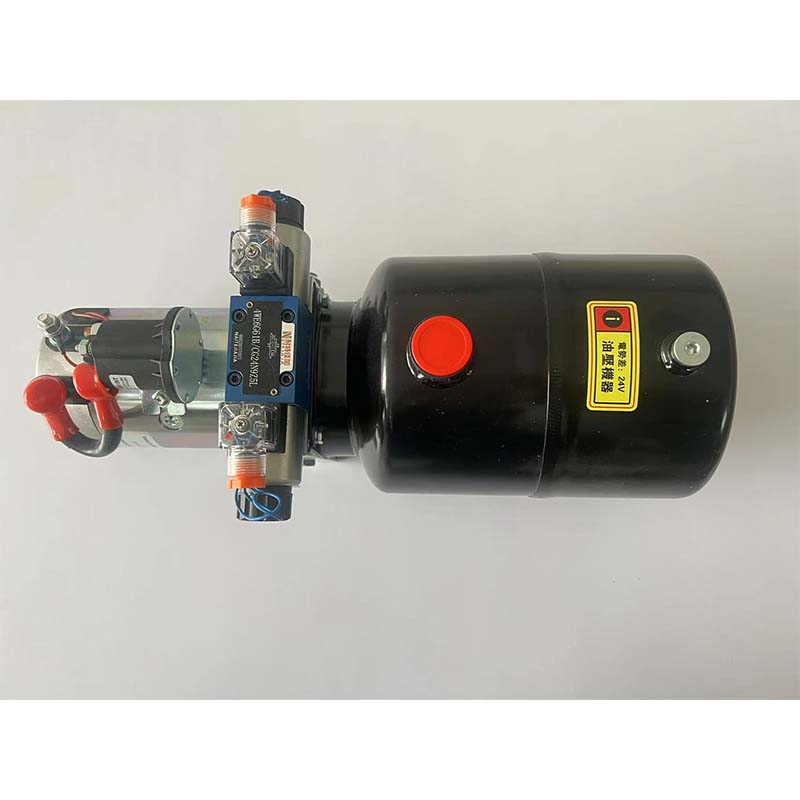Nov . 10, 2024 13:32 Back to list
Top Quality Seals for Enhanced Performance in Hydraulic Cylinders
High-Quality Seals in Hydraulic Cylinders Ensuring Performance and Longevity
Hydraulic cylinders are vital components in various industrial applications, providing the necessary force and motion through the use of hydraulic fluid. One of the critical factors that determine the performance and longevity of hydraulic cylinders is the quality of the seals used within them. High-quality seals play a significant role in maintaining the efficiency, safety, and reliability of hydraulic systems.
The Importance of Seals
Seals in hydraulic cylinders are designed to prevent fluid leakage, protect against contamination, and provide a barrier against external elements. The primary function of these seals is to ensure that hydraulic fluid remains contained within the cylinder, allowing for efficient power transmission when the cylinder is activated. When seals fail or are of poor quality, it can lead to fluid leaks, loss of pressure, and ultimately, system failure. This not only affects productivity but can also pose safety risks in industrial environments.
Material Considerations
Selecting the appropriate material for hydraulic seals is crucial. Common materials used for hydraulic seals include nitrile rubber (NBR), fluoroelastomer (FKM), polyurethane (PU), and PTFE (Teflon). Each material has its unique properties, making it suitable for different applications
1. Nitrile Rubber (NBR) Known for its excellent resistance to oils and hydraulic fluids, NBR is commonly used in low to medium-pressure applications.
2. Fluoroelastomer (FKM) This material is ideal for high-temperature environments and is resistant to a wide range of chemicals, making it suitable for specialized applications.
3. Polyurethane (PU) Known for its durability and resistance to abrasion, polyurethane seals are often used in heavy-duty applications.
4. PTFE (Teflon) Although it has a lower friction coefficient and excellent chemical resistance, PTFE seals are often used in conjunction with other materials to enhance sealing performance.
In many cases, the choice of material will depend on the specific operating conditions, including temperature, pressure, and the type of fluid being used. Ensuring that the right seal material is selected will help in optimizing the performance and lifespan of the hydraulic cylinder.
high quality seals in hydraulic cylinder

Seal Design
The design of seals is equally important as the material used. Various types of seals are utilized in hydraulic cylinders, such as O-rings, lip seals, and U-cups. Each design has its specific benefits and applications. For instance
- O-Rings These are simple and widely used due to their versatility. They can effectively seal in both static and dynamic applications.
- Lip Seals These seals are designed to accommodate movement and can provide effective sealing against leakage while allowing for some degree of flexibility.
- U-Cups These seals are particularly useful in high-pressure applications, as they provide better sealing performance under significant hydraulic forces.
The design and engineering of these seals must account for the dynamic conditions in which they operate, including movement speed, pressure fluctuations, and temperature variations. High-quality seals often feature advanced designs that enhance durability and reduce wear on both the seal and the cylinder.
Quality Control and Testing
To ensure that seals perform optimally, manufacturers must adhere to strict quality control measures and testing protocols. This process includes evaluating the seals' resistance to wear, temperature, and pressure, as well as ensuring compatibility with various hydraulic fluids.
Advanced testing methods, including tensile tests, compression set tests, and fluid compatibility tests, are critical in determining the seals' performance characteristics. By ensuring that seals meet high industry standards, manufacturers can deliver products that not only meet but exceed customer expectations.
Conclusion
In summary, high-quality seals are essential components in hydraulic cylinders that significantly influence the overall performance, safety, and longevity of hydraulic systems. The selection of appropriate materials, effective seal design, and rigorous quality control processes all contribute to ensuring that hydraulic seals can withstand the challenging conditions they encounter in various applications. By investing in high-quality seals, businesses can enhance the reliability of their hydraulic systems, minimize downtime, and ultimately improve productivity. As industries continue to evolve, the importance of high-quality seals in hydraulic cylinders will remain a cornerstone of efficient operations.
-
1.5 Ton Flipping Oil Cylinder 70/82-40-217-720-Hebei Shenghan Hydraulic Machinery|Precision Hydraulic Cylinder,Custom Hydraulic Solutions
NewsAug.29,2025
-
1.5 Ton Flipping Oil Cylinder 70/82-40-217-720 | Hebei Shenghan Hydraulic Machinery Co., Ltd.
NewsAug.29,2025
-
High-Precision [90/105-50-180-480] Industrial Component | Durable & Reliable
NewsAug.27,2025
-
High-Performance Set of 50/60-45-290 471 | Durable & Reliable Components
NewsAug.26,2025
-
Efficient Pallet Truck Power Units - Reliable Hydraulic Systems
NewsAug.25,2025
-
Premium Set of 50/60-45-290 471 Parts | High Performance
NewsAug.24,2025
